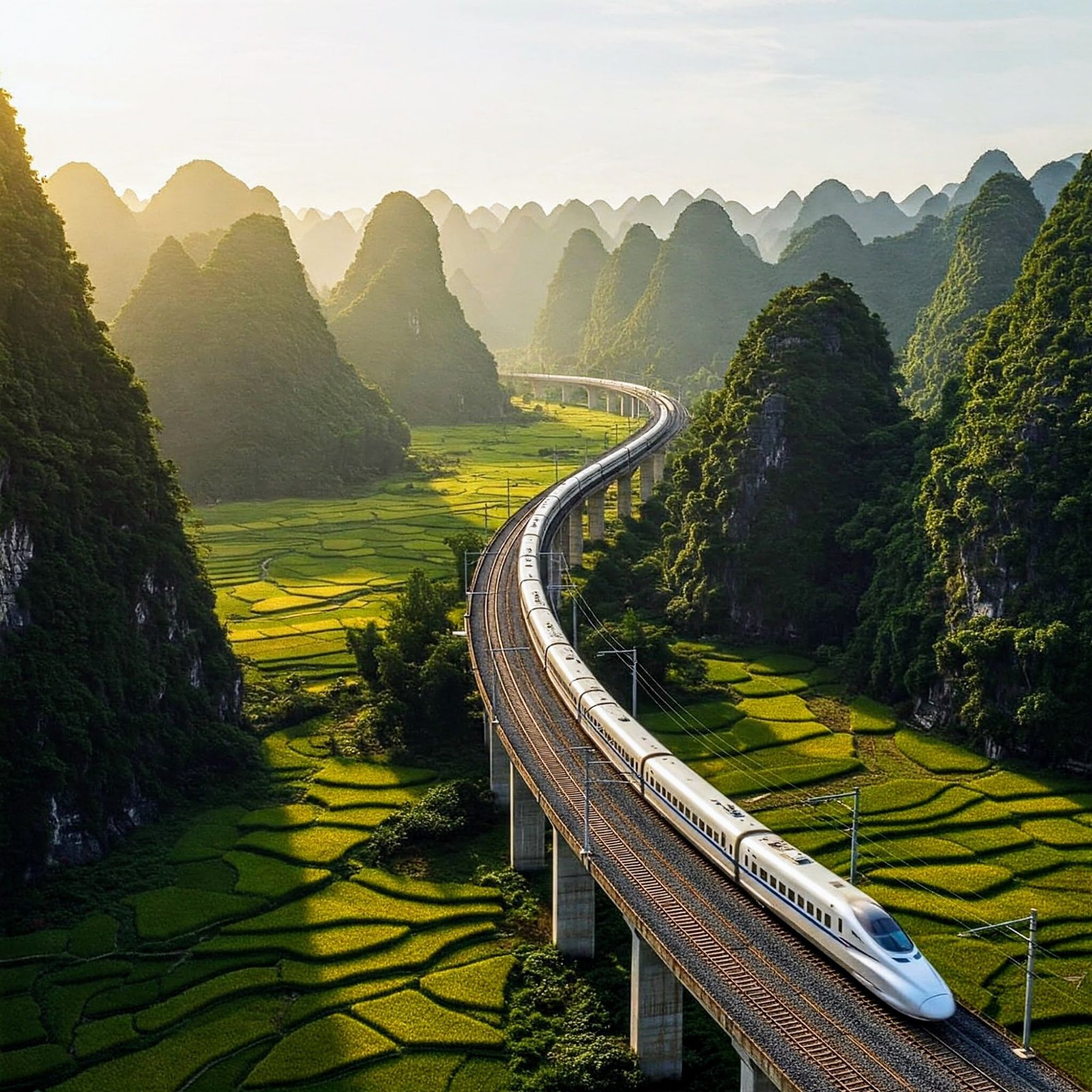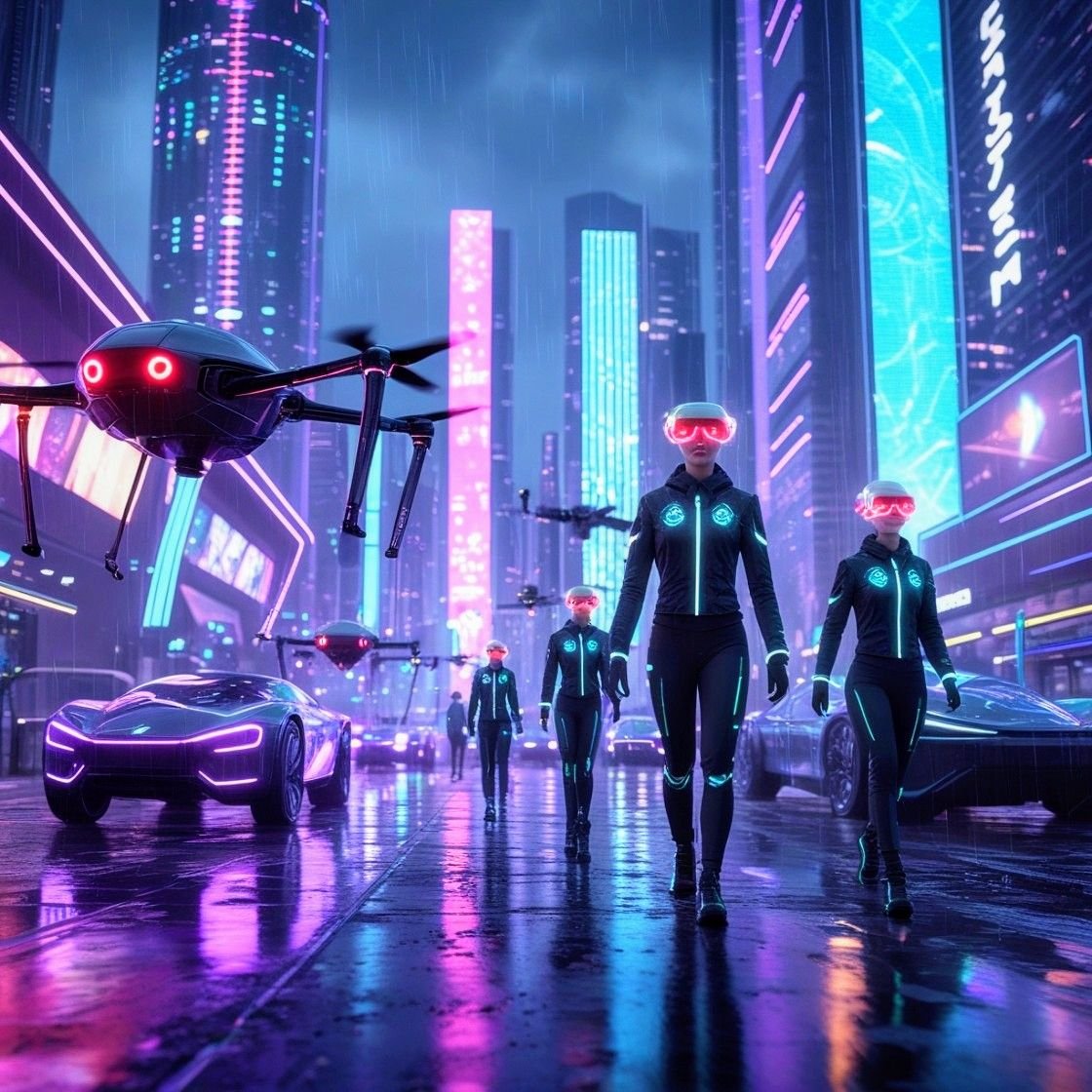AI-Generated Image. China’s Bullet Train Network Is Connecting People, Creating Jobs & Making Billions by Tech Is The Culture
China’s High-Speed Cross-Country Bullet Train Network (Where Trains Outrun Cheetahs and Logic)
Imagine a train so fast, it could outrun your Uber driver’s excuses. Enter China’s high-speed rail network: a 48,000-kilometer web of steel that zips passengers from Beijing to Shanghai (1,318 km) in 4.5 hours, turns mountain treks into coffee breaks, and makes Amtrak look like a horse-drawn carriage. Let’s talk about how China’s bullet trains became the Usain Bolt of transportation—and why the world is scrambling to catch up.
The CR450 (When “Fast” Gets a Glow-Up)
“Speed limits? More like speed suggestions.”
In December 2024, China unveiled the CR450, a bullet train prototype that hits a blistering 450 km/h (280 mph) in testing and cruises at 400 km/h (249 mph) commercially. To put that in perspective:
– It’s 50 km/h faster than the current CR400 Fuxing trains.
– It could race a cheetah (and win).
– It makes the Hyperloop look like a day-care field trip.
The CR450 isn’t just speedy; it’s smarter. With 4,000 sensors monitoring everything from fire risks to wobbly pantographs, it’s like a rolling Swiss Army knife of safety. Engineers even slapped on a “bogie enclosure” to slice air resistance and added noise-cancelling tech so quiet, you could hear a mouse whisper.
Fun Fact: The CR450’s seats now include phone holders for TikTok marathons. Priorities, people.
The Bullet Train Network Is Bigger Than Your Ex’s Apology Tour
“Why drive when you can teleport?”
China’s high-speed rail (HSR) network isn’t just large; it’s obnoxiously comprehensive:
– 48,000 km of track as of 2024, enough to wrap around Earth 1.2 times.
– Connects 93% of cities with 500,000+ people, including Hong Kong.
– Plans to hit 60,000 km by 2030, linking even remote villages like Jiuzhaigou (a UNESCO site once reachable only by death-defying mountain roads).
Take the Guangzhou-Shenzhen-Hong Kong Express Rail Link: it shuttled 27 million passengers in 2024 alone, proving that yes, you can outrun rush-hour traffic.
Pro Tip: If you’re late in China, blame the train. No one will believe you.
Engineering Wizardry (From Maglevs to Mountain Tunnels)
“Building railroads through mountains? Just another Tuesday.”
China’s rail engineers treat geography like a mild inconvenience. The Qinghai-Xizang Railway, which snakes through the Himalayas at 5,000 meters above sea level, has moved 87 million tons of cargo since 2006 while boosting Tibet’s GDP by 725%. Meanwhile, the new Zhengjiangguan-Huangshengguan line carves through Sichuan’s rugged terrain, turning an 8-hour drive into a 99-minute joyride.
But the real flex? Gauge-changing trains. These chameleon-like marvels switch track widths mid-journey, bypassing the need for bogie swaps or border delays. Perfect for cross-border routes under China’s Belt and Road Initiative (BRI), like the China-Laos Railway, which now dispatches 18 freight trains daily to Southeast Asia.
Quote of the Day: “Mountains? We’ll just move them.” Unnamed Chinese engineer, probably.
Economic Supercharger (Bullet Train That Print Money)
“Why invest in stocks when you can invest in steel?”
China’s HSR isn’t just about speed; it’s an economic cheat code:
– 4.08 billion passengers in 2024, up 10.8% YoY.
– 3.99 billion tons of cargo moved, slashing logistics costs by $8.3 billion.
– China-Europe freight trains hauled 2.07 million containers in 2024, linking 227 cities across 25 countries.
Take Zhejiang Mundiver, a Spanish wine importer: their delivery time dropped from 45 days by sea to 20 days by rail, saving enough time to age a fine Rioja. Even Germany’s Duisburg Port owes 20,000 jobs to BRI rail traffic.
Hot Take: If China’s trains were a TikTok trend, they’d be “Railway Rich.”
The Dark Side + Debt, Dinosaurs, and Dilemmas)
“Not all that glitters is gold… or stainless steel.”
For all its glory, China’s rail empire has skeletons in its closet:
– $900 billion debt from breakneck expansion.
– Ticket prices are creeping up, alienating budget travelers.
– Some rural lines operate at a loss, serving more empty seats than people.
But let’s be real: when your trains can outpace gravity, who’s counting pennies?
The Future (Hyperloops, Maglevs, and Moon Rails?)
“Why stop at Earth?”
China’s 2025-2030 roadmap reads like sci-fi fanfiction:
– 600 km/h maglev trains (tested in 2021) for intercity routes.
– Autonomous track-laying robots and 5G-enabled “smart railways.”
– 30,000-ton freight trains (heavier than a T. rex herd) hauling goods at 160 km/h.
Heck, they’re even exploring hyperloop tech because why walk to the future when you can vibrate there at supersonic speeds?
All Aboard the Pain Train (of Progress)
China’s bullet trains are more than metal tubes on wheels; they’re a testament to ambition, engineering, and the sheer audacity to say, “Why not?” From shaving days off commutes to reshaping global trade, this network isn’t just moving people; it’s launching a transportation revolution.
So next time you’re stuck in traffic, remember: somewhere in China, a CR450 is sipping metaphorical tea, whispering, “Skill issue.”
Let us know your thoughts on the subject at techistheculture.bsky.social. Keep ahead of the game with our newsletter & the latest tech news.
Disclaimer: This article contains some AI-generated content that may include inaccuracies. Learn more [here].



